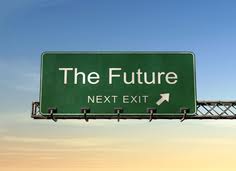There’s an old joke about getting lost in the country and asking directions from the elderly farmer rocking on his front porch. The punch line is “Nope, can’t get there from here.” That pretty much sums up how we feel about efforts to change education. We all agree that things need to change, but we don’t seem to be able to get there from here.
If you follow the education blogs, you get the distinct impression that it’s all about technology. “The 5 Newest Technologies that will Change Education” “Ten Things to Do to Get Your Students Wired” Don’t count on it. Anyone who has taken any educational technology courses knows that this is an old fight.
Back in the 60’s, Clark and Kosma debated the effects of technology on learning, one saying that it’s the technology that will save the day and the other saying that expecting technology to improve learning is like attributing your nutrition to the truck that delivers your food.
Currently in the early part of the 21st Century, the media folks are winning that debate. In higher education, the IT people have become the gurus and educators have taken a back seat. Critical theorists and those who write about contemporary educational issues are easy to ignore. Abstract ideas are hard to sell. So, everyone is trying to sell the delivery truck instead. That’s easier.
But, it’s not the delivery truck that needs to change, it’s the curriculum and pedagogy – what students learn and the way they learn it. Unfortunately our educational programming falls short of developing innovative problem solvers, training students instead to imitate a traditional model without strategizing for improvement. Lists of student learning outcomes include flexible thinking, questioning authority, critical thinking, and discerning for change, but learning experiences are so isolated from the real world that they offer little engagement with any of these ideas.
Institutional goals are concerned with student satisfaction, retention and graduation because this strategy maximizes revenues. Students want to graduate and get a high paying job, never mind contributing to society for the common good. Skill development is too hard to evaluate. And it isn’t really necessary. So, we give grades instead. That’s easier.
We have long said that change will not happen top down. We’ll never get to the village of ‘A-Different-Future’ if we stay with the status quo. The train we’re on doesn’t go there. We end up in the village of ‘Not-Far-Enough’. We need to get faculty out of the classroom, engaging students in real world issues, showing students how to collaborate with the community to solve problems. There are any number of grassroots initiatives that offer internships and life experiences to nurture critical skills. And we have the new technologies to help us find and communicate with the folks who are already there.
The new technologies are about affecting learning. Not about raising test scores, but about connecting with others, collaborating to learn new self-sufficiency skills, community-building to restore local economies. Let’s keep going past ’Not-Far-Enough’ to envision a different future. Because it is possible to get there from here.
Cheers,
Gus


